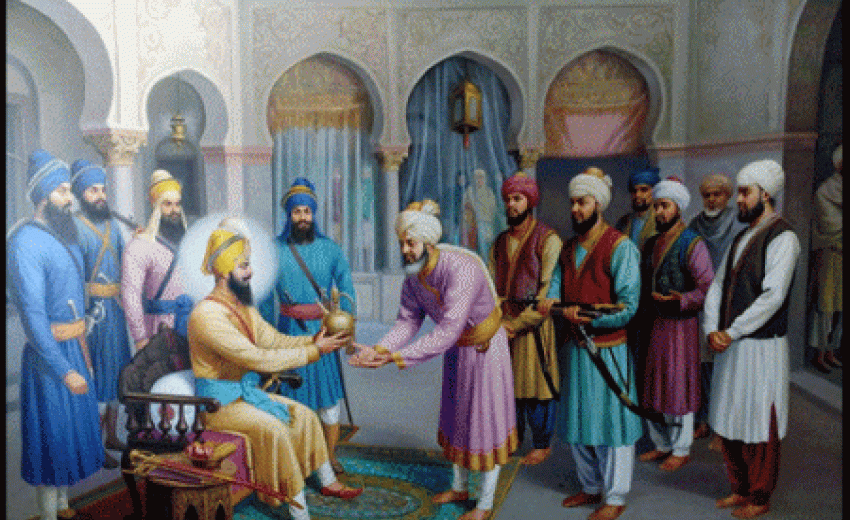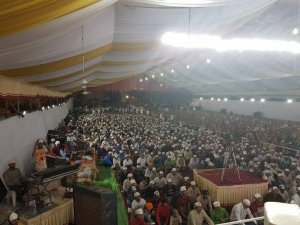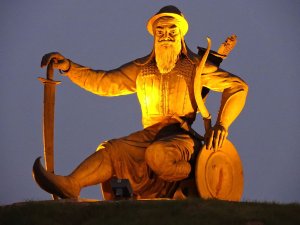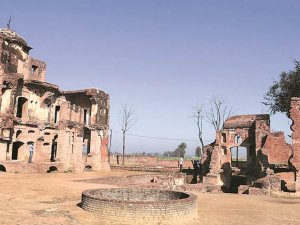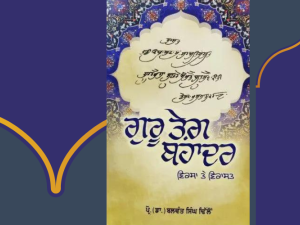Background
Anyone who knows Sikhs closely can vouch that they cherish the memories of all those who assisted or were close to their Gurus. The later part of the month of December has special significance in Sikh History. In December 1705, Guru Gobind Singh, the tenth Guru of Sikhs had to leave Anandpur and lost all his four sons (& lot of other close Sikhs) to the Mughal & Hill Rajput army. The governor of Sirhind, Wazir Khan ordered the Guru's younger sons aged 6 and 8 years respectively to be bricked up alive within a wall.
On the other extreme, during this period, a few Muslim devotees and admirers took grave risk and assisted Guru Gobind Singh. If they had been caught helping the Guru they would have certainly been given death penalty by the authorities. The descendants of these noble souls still hold the relics and artefacts given by Guru Gobind Singh. I have used Sikh Encyclopaedia by Harbans Singh published in 1992-99 and Mahan Kosh (Encyclopaedia) by Bhai Kahn Singh Nabha, published in 1930 for this write-up.
Nihang Khan & his daughter Bibi Mumtaz
According to Sarup Singh Kaushish's Guru kian Sakhian, Nihang Khan was the chief of Kotla near Ropar (East Punjab) and a great admirer of Guru Gobind Singh. He and his whole family attended Baisakhi festivity at Anandpur in 1694 and paid homage to the Guru. At his request, Guru Gobind Singh visited him in his village a month later on the occasion of the engagement of his son (Alam Khan) and blessed the family.
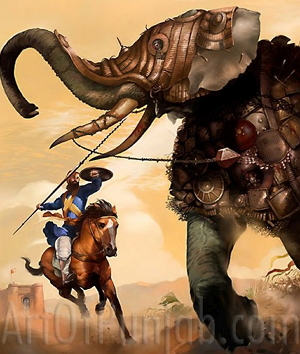 Bachittar Singh (who famously faced a drunken war elephant single handedly in the first battle of Anandpur Sahib) was severely wounded in a skirmish after the evacuation of Anandpur in December 1705. He was brought to Nihang Khan's mansion. Sikhs left him there as he was too unwell to travel. The owner's daughter Mumtaz took upon the duty to look after the injured guest. The Mughal forces came pursuing for the Sikhs and to throw the pursuers off the scent, Nihang Khan told them that the wounded person in the house was his son-in-law. Once convinced, the Mughal forces left. Bachittar Singh was well looked after but did not survive and succumbed to his injuries. Nihang Khan performed the cremation of the body in his haveli. Later when Mumtaz came of age she declined to marry and reminded her father that she was spiritually married to Bachittar Singh when Nihang Khan told the Mughal forces that the man in the house was his son-in -law. The pious lady remained unmarried throughout her life. A Gurdwara named after Bibi Mumtaz was built to commemorate the scared act.
Bachittar Singh (who famously faced a drunken war elephant single handedly in the first battle of Anandpur Sahib) was severely wounded in a skirmish after the evacuation of Anandpur in December 1705. He was brought to Nihang Khan's mansion. Sikhs left him there as he was too unwell to travel. The owner's daughter Mumtaz took upon the duty to look after the injured guest. The Mughal forces came pursuing for the Sikhs and to throw the pursuers off the scent, Nihang Khan told them that the wounded person in the house was his son-in-law. Once convinced, the Mughal forces left. Bachittar Singh was well looked after but did not survive and succumbed to his injuries. Nihang Khan performed the cremation of the body in his haveli. Later when Mumtaz came of age she declined to marry and reminded her father that she was spiritually married to Bachittar Singh when Nihang Khan told the Mughal forces that the man in the house was his son-in -law. The pious lady remained unmarried throughout her life. A Gurdwara named after Bibi Mumtaz was built to commemorate the scared act.
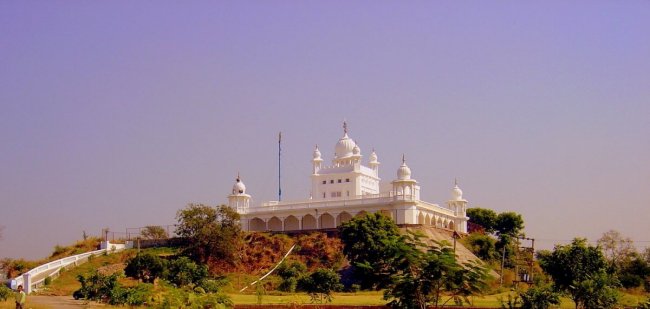
Ghani Khan & Nabi Khan
These two Pathan brothers were horse dealers of Machhiwara (now in Ludhiana district, East Punjab) were admirers of Guru Gobind Singh. They had been to Anandpur and sold many horses to Sikhs. When they learnt that the Guru was travelling in a lonely state after the battle and the Guru had come to Machhiwara, they at once came to meet him and offered their services.
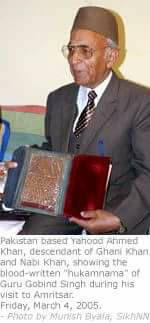 The brothers provided the Guru with a blue coloured dress and carried him out of Machhiwara in a palanquin disguised as a Muslim divine. They declared him to be Uch da Peer, the holy man of Uch, an old seat of Muslim Sufis (West Punjab). They escorted him thus up to Tehrari, a village near Raikot in Ludhiana district, where Rai Kalha received him. The Guru gave Ghani Khan and Nabi Khan with his blessings and a hukamnama meant to be a letter of commendation which is reverently preserved by their descendants.
The brothers provided the Guru with a blue coloured dress and carried him out of Machhiwara in a palanquin disguised as a Muslim divine. They declared him to be Uch da Peer, the holy man of Uch, an old seat of Muslim Sufis (West Punjab). They escorted him thus up to Tehrari, a village near Raikot in Ludhiana district, where Rai Kalha received him. The Guru gave Ghani Khan and Nabi Khan with his blessings and a hukamnama meant to be a letter of commendation which is reverently preserved by their descendants.
The descendants migrated to Pakistan in 1947. Their house in Machhiwara is now a Gurdwara known as Gurdwara Ghani Khan & Nabi Khan (see pic above). One of the descendants Yahood Ahmed Khan came to East Punjab in 2005 with the original copy of the hukamnama.
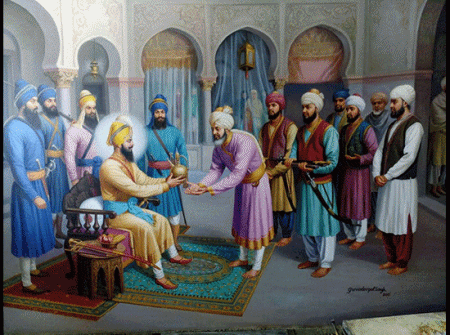
Rai Kalha of Raikot
Rai Kalha was a local chief of Raikot, although a Muslim, he venerated Guru Gobind Singh. When the Guru reached Raikot from Machhiwara, Rai Kalha gave him all the resources at his disposal. He sent his shepherd Nuru to Sirhind who brought the sad news of the martyrdom of the Guru's younger sons. Bhai Kahn Singh Nabha in 1930 wrote that people of Rai Kalha's community live in Raikot. The Guru bestowed upon Rai Kalha's his three personal artefacts namely a sword, a Rehal (folding book-stand) and a special Jug. 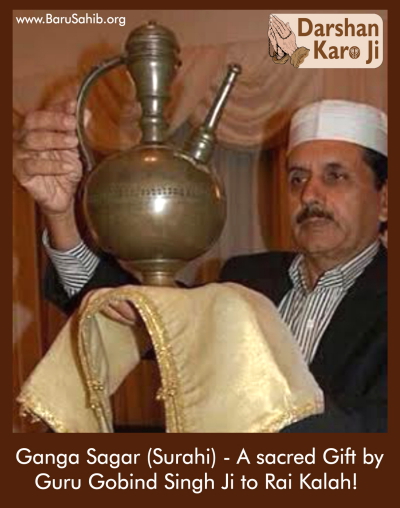 Guru Gobind Singh then reached Dina village (Malwa region, East Punjab) where he wrote the famous letter 'Zafarnama' to Aurangzeb.
Guru Gobind Singh then reached Dina village (Malwa region, East Punjab) where he wrote the famous letter 'Zafarnama' to Aurangzeb.
A portrait of Nawab Rai Kalha was placed in the central Sikh museum on 24th July 2017 by Shiromani Gurdwara Parbandak Committee. The museum in situated on the first floor at the entrance of Harmandar Sahib, Amritsar.
Before partition, the special Jug 'Ganga Sagar' was displayed by Khan Bahadur Rai Inayat Khan for the benefit of Sikhs in their ancestral town. The present owner of 'Ganga Sagar' is Rai Aziz Ullah Khan, a grandson of Khan Bahadur Rai Inayat Khan and ninth generation descendant of Rai Kalha. I believe he was Member of National Assembly from Sahiwal in 2002. Rai Aziz Ullah Khan came to East Punjab in 2004 with the relic gifted by Guru Gobind Singh which his family has kept with great respect and care for over 300 years.
Conclusion
Guru Gobind Singh was a Saint-Soldier who fought defensive wars. Saints are beyond the petty considerations of caste and religion. Their personality attracted people from all walks of life. Guru Gobind Singh was no different. Sikh chroniclers state that he visited Kotla Nihang twice and gifted a sword and shield to Nihang Khan. The brothers Ghani & Nabi Khan are fondly remembered and there is another Gurdwara commemorating their holy act, aptly named Gurdwara Uch da Peer. It is quite remarkable that a place of worship is named after people from another faith. I hope that Non-Sikh readers have learnt something new and unique from this write-up.
